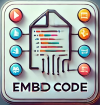Credits
 ['weelookang@gmail.com', 'Francisco Esquembre', 'Felix J. Garcia Clemente']
['weelookang@gmail.com', 'Francisco Esquembre', 'Felix J. Garcia Clemente']
Sample Learning Goals
Exploring Shapes with an Interactive Geoboard: A Tool for Learning Perimeter and More
 |
| https://iwant2study.org/lookangejss/00workshop/2024PacoFelix/Simulations/day5/Geoboard_SLS__1_/","target":"_blank"}">Link |
In today's digital learning environment, tools that allow students to explore mathematical concepts interactively are invaluable. One such tool is the interactive geoboard, which brings the classic classroom geoboard into the digital age. The image above showcases a web-based interactive geoboard that can be used to explore shapes, measure perimeters, and engage students in discussions about geometry.
Features of the Interactive Geoboard
-
Dynamic Grid System: The geoboard provides a 10x10 grid of dots, mimicking the physical board's pegs where students can connect dots to form shapes. This layout allows students to experiment with geometric concepts freely.
-
Tool Options:
- New Line: Students can click to start drawing lines between dots. This feature allows them to create various geometric shapes and explore their properties.
- Delete Line: Mistakes are a part of learning, and this feature lets students easily remove lines and start over without frustration.
- Reset: With a single click, students can clear the entire board, promoting experimentation without the fear of irreversible errors.
-
Color-Coded Shapes: Different colors for different shapes (as seen with red and blue lines) help distinguish between multiple shapes or parts of a complex figure. This visual differentiation can assist in comparative analysis and discussions about shapes.
-
Distance Labels: Distances between connected points are automatically calculated and displayed, helping students understand and calculate perimeters directly on the board. This feature turns abstract math into a tangible learning experience by showing the exact lengths of sides.
Educational Benefits
-
Understanding Perimeter: With the interactive geoboard, students can learn to calculate the perimeter of various shapes. They can visually see how changing the shape affects the perimeter and use the distance labels to verify their calculations.
-
Shape Exploration: Students can explore different shapes, from simple triangles and squares to complex polygons. This tool allows them to manipulate and transform shapes, fostering a deeper understanding of geometric properties.
-
Visual Learning: The geoboard's visual nature supports kinesthetic and visual learners by allowing them to "see" geometry in action. This hands-on approach can make learning geometry more accessible and engaging for students.
-
Encouraging Critical Thinking: By experimenting with shapes and observing the changes in perimeter, students develop critical thinking skills. They learn to hypothesize, test, and draw conclusions based on their interactions with the geoboard.
Classroom Applications
- Group Activities: Teachers can use the interactive geoboard for group activities, where students collaborate to create shapes with specific perimeters or other constraints.
- Homework Assignments: Students can complete assignments using the geoboard, reinforcing classroom learning at home.
- Interactive Lessons: Teachers can incorporate the geoboard into interactive lessons, demonstrating concepts in real-time and encouraging student participation.
Conclusion
The interactive geoboard is a powerful educational tool that combines the tactile experience of traditional geoboards with the flexibility and precision of digital technology. By allowing students to explore geometric shapes and calculate perimeters interactively, this tool enhances learning, making mathematical concepts more accessible and engaging. As education continues to embrace technology, tools like the interactive geoboard will play an essential role in shaping the future of learning.
For Teachers
20240718-24 Web EJS beta Workshop by Francisco Esquembre and Félix J. García Clemente supported by MOE CPDD1 Registration for Web EJS Workshop (18-24 July 2024)
Venue: MOEHQ Buona Vista, B3-02 (18 July) P2-01-02 (19,22,23,24 July) or
Contact organisers at Lawrence_WEE@moe.gov.sg
Research
[text]
Video
[text]
Version:
- https://weelookang.blogspot.com/2024/03/20240718-24-web-ejs-beta-workshop-by.html?m=1
- https://weelookang.blogspot.com/2024/08/project-6-webejs-workshop-exploring.html
[text]
end faq
{accordionfaq faqid=accordion4 faqclass="lightnessfaq defaulticon headerbackground headerborder contentbackground contentborder round5"}
- Details
- Written by Loo Kang Wee
- Parent Category: Interactive Resources
- Category: Mathematics
- Hits: 1184







